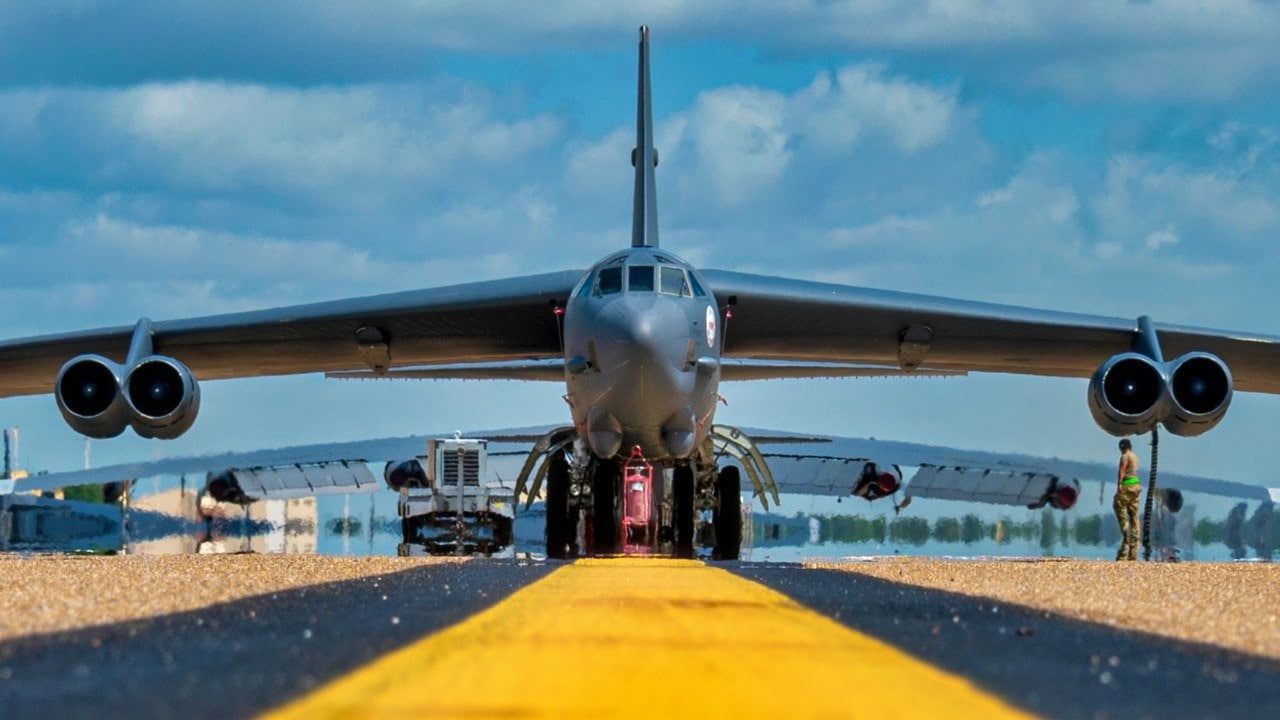The B-52 looked to dominate the Cold War. Then, the Vietnam War Began…Recognized for carpet bombing densely concentrated groups of Viet Cong during the Vietnam War, the classic United States Air Force B-52 has surged into the 21st century as a massively sustained, upgraded, and enhanced air combat platform poised to serve several decades into the future.
Today’s B-52 is quite different from the B-52 of the Vietnam era. The modernized airframe operates as a large bomb truck, blanketing enemy areas with large, unguided bombs to enable ground forces to maneuver and destroy enemy positions.
One might think that such a large, non-stealthy platform as the B-52 might be ill-equipped for modern, great power warfare in a highly contested environment, yet weapons developers have gathered and incorporated a wide range of lessons learned from years of combat and integrated new generations of technology into the classic bomber.
Today’s B-52 has an entirely new, more survivable engine, fuel-efficient operation, a new internal weapons bay, a massively expanded weapons arsenal, and long-range precision-guided cruise missiles.
A lesser-known yet critical aspect of combat aircraft modernization is that airframes can remain viable for years beyond their anticipated service life with some maintenance and structural support.
The extended life is the case with the B-52, as today’s B-52 operates with an entirely new sphere of technologies and air combat capability compared with the Vietnam-era bomber.
Lessons from Vietnam
The current B-52 technological composition and the concept of operation with which it flies were likely heavily informed by what Air Force weapons developers learned from its combat experiences in Vietnam.
For instance, large bombers were shown to be quite vulnerable to North Vietnamese Air Defenses.
During the War, 18 B-52s were lost in combat and 12 due to other circumstances, mainly over Vietnam.
North Vietnamese forces effectively used SA-2 surface-to-air-missiles to destroy B-52s, which makes sense given the altitudes the aircraft flew at and the kinds of bombs it attacked with.
An article by the National Museum of the United States Air Force describes some tactical challenges B-52s encountered during the Vietnam War.
One challenge, quite simply, was that during some operations like the famous Linebacker II, the bombers flew predictable routes that were seen and tracked by the North Vietnamese.
“The bombers flew the same routes every night and gave away the element of surprise. Already knowing the B-52s’ route, North Vietnamese fighters reported the bombers’ altitude to the SAM crews, who simply launched unguided SAMs to where they predicted the bombers would be,” the essay says.
B-52 & JDAMs
There may indeed be a connection between the vulnerability of lower-flying B-52s and the successful arrival of precision-guided, air-dropped, high-altitude bombs such as Joint Direct Attack Munitions during the Gulf War era.
If supported by longer-range sensors and weapons, flying at higher altitudes can achieve a tactical impact while enabling crews to operate at safer stand-off distances.
Following Vietnam, Pentagon weapons developers prioritized precision and range in their explorations of next-generation air attack weapons.
The Pentagon debuted several precision-guided air bombs during the Gulf War in 1991.

A B-52 Stratofortress takes off during Global Thunder 2019 at Barksdale Air Force Base, La., Nov. 5, 2018. Global Thunder is an annual U.S. Strategic Command (USSTRATCOM) exercise designed to provide training opportunities to test and validate command, control and operational procedures. The training is based on a notional scenario developed to drive execution of USSTRATCOM and component forces’ ability to support the geographic combatant commands, deter adversaries and, if necessary, employ forces as directed by the President of the United States. (U.S. Air Force photo by Airman 1st Class Lillian Miller)
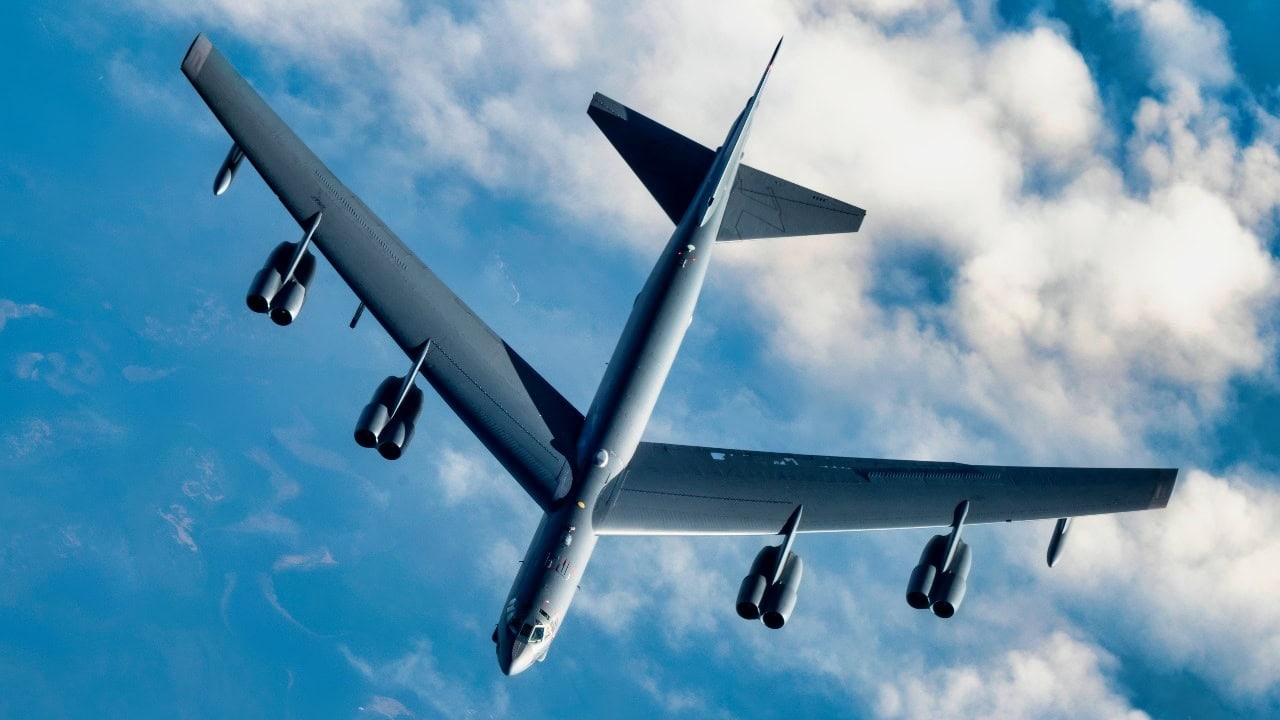
A U.S. Air Force B-52 Stratofortress departs after being refueled by KC-135 Stratotanker over the Pacific Northwest July 18, 2024. The 92nd Air Refueling Wing and 141st ARW’s ability to rapidly generate airpower at a moment’s notice was put to the test when Air Mobility Command’s Inspector General team conducted a no-notice Nuclear Operational Readiness Inspection, July 16–18, 2024. During the NORI, Airmen demonstrated how various capabilities at Fairchild AFB enable units to generate and provide, when directed, specially trained and equipped KC-135 Stratotanker aircrews to conduct critical air refueling of U.S. Strategic Command-assigned strategic bomber and command and control aircraft. (U.S. Air Force photo by Staff Sgt. Lawrence Sena)
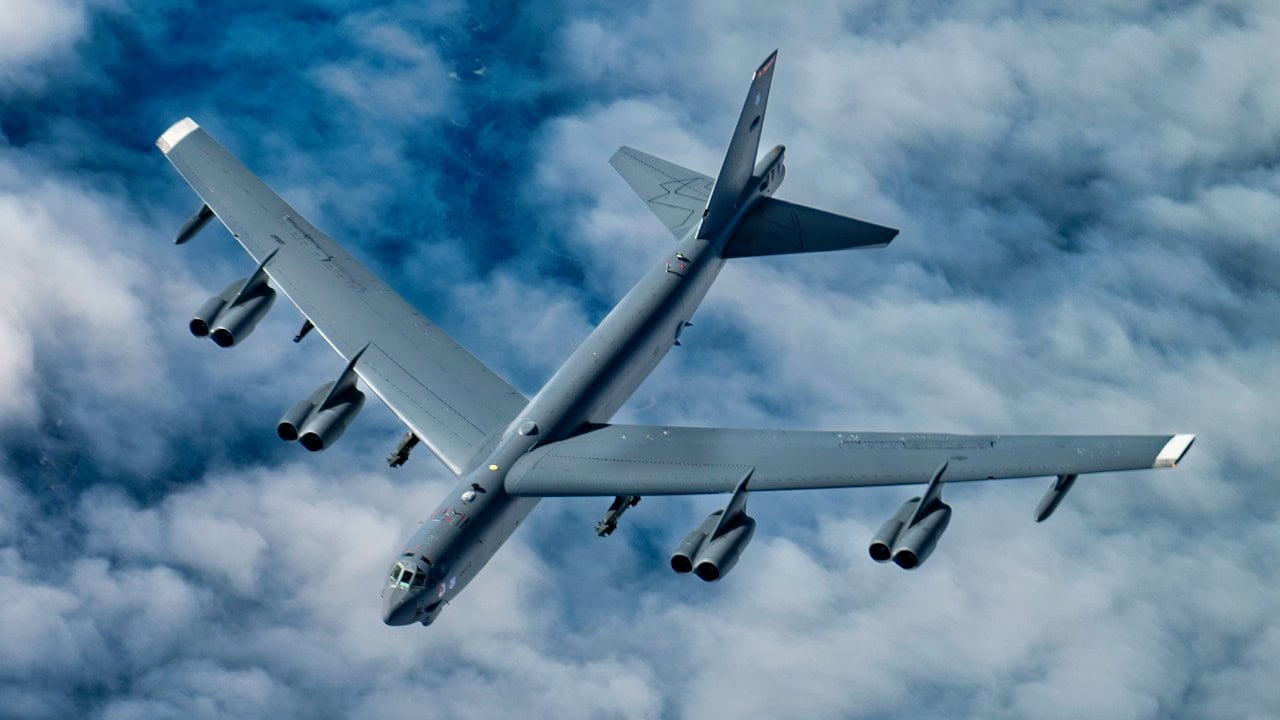
A B-52 Stratofortress assigned to the 2nd Bomb Wing, Barksdale Air Force base, Louisiana, approaches a KC-135 Stratotanker assigned to the 6th Air Refueling Wing, MacDill AFB, Florida, for fuel over the southeastern United States, Dec. 4, 2024. The B-52 Stratofortress is a long-range, heavy bomber that can perform a variety of missions. The aircraft can carry nuclear or precision guided conventional ordnance with worldwide precision navigation capability. (U.S. Air Force photo by Staff Sgt. Lauren Cobin)
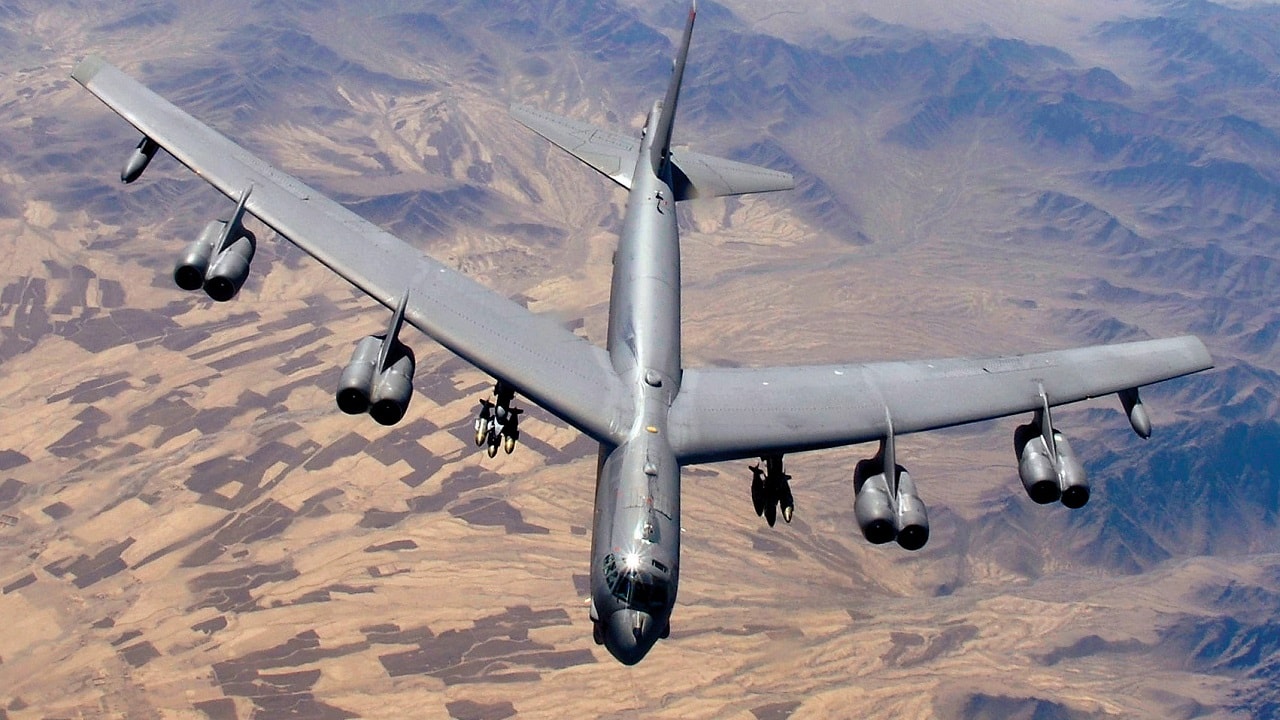
B-52H Stratofortress Primary function: Heavy bomber. Speed: 650 mph. Dimensions: Wingspan 185 ft.; length 159 ft. 4 in.; height 40 ft. 8 in. Range: 8,800 miles unrefueled. Armament: M117, Mk-56/62/65/82/84, CBU- 87/89/103/104/105, AGM-86B/C/D/129A/158A, GBU- 10/12/28/31/38; nuclear weapons. Crew: Five. (U.S. Air Force photo by Master Sgt. Lance Cheung)
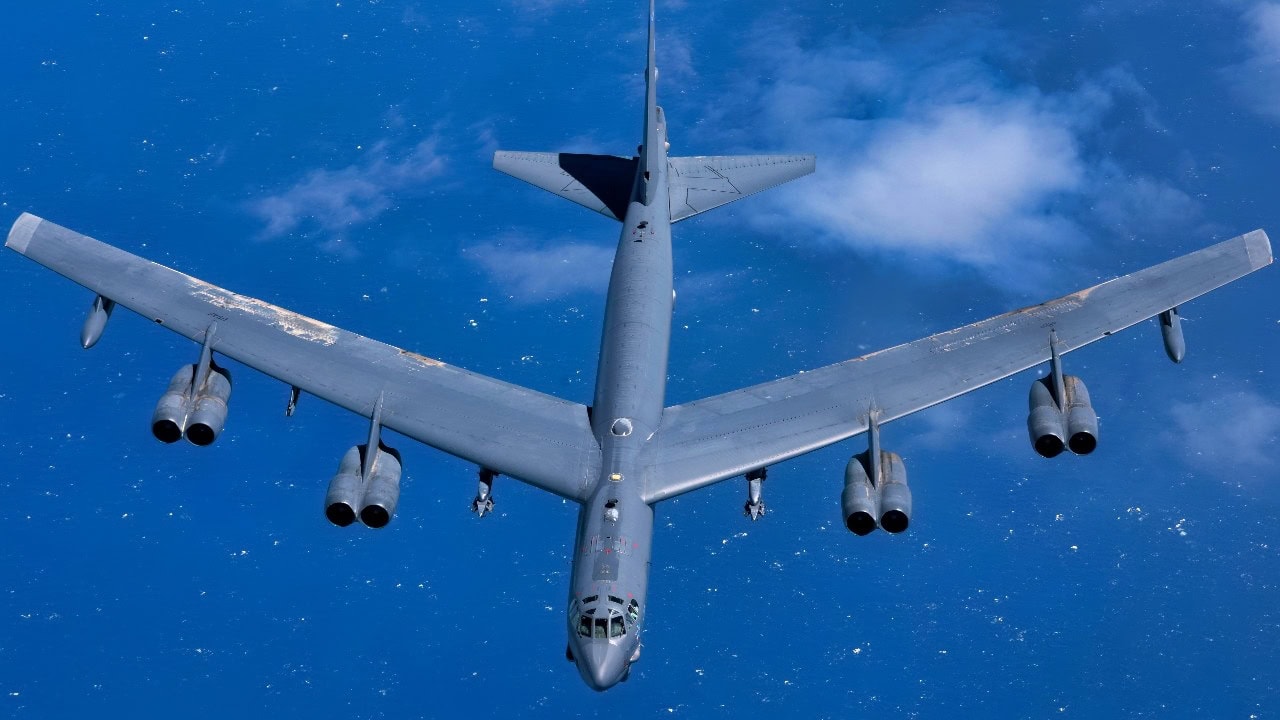
A U.S. Air Force B-52 Stratofortress, from the 5th Bomb Wing at Minot Air Force Base, N.D., breaks away after receiving fuel from a U.S. Air Force KC-135 Stratotanker from RAF Mildenhall, England, over the Mediterranean Sea April, 9, 2018. A formation of four KC-135s refueled two B-52s. Each KC-135 offloaded more than 80,000 pounds of fuel. (U.S. Air Force photo by Airman 1st Class Benjamin Cooper)
It is possible that the communications networking technology now arming the B-52 emerged from Vietnam-era combat lessons, as commanders learned the value of knowing enemy locations, sharing targeting details, and expediting connectivity between air and ground forces.
With a new digital communications system called Combat Network Communications Technology (CONECT), bomber crews can receive mission and targeting updates while in flight, enabling them to adjust to new combat information.
About the Author: Kris Osborn
Kris Osborn is the President of Warrior Maven – Center for Military Modernization. Osborn previously served at the Pentagon as a highly qualified expert in the Office of the Assistant Secretary of the Army—Acquisition, Logistics & Technology. Osborn has also worked as an anchor and on-air military specialist at national TV networks. He has appeared as a guest military expert on Fox News, MSNBC, The Military Channel, and The History Channel. He also has a Masters Degree in Comparative Literature from Columbia University

